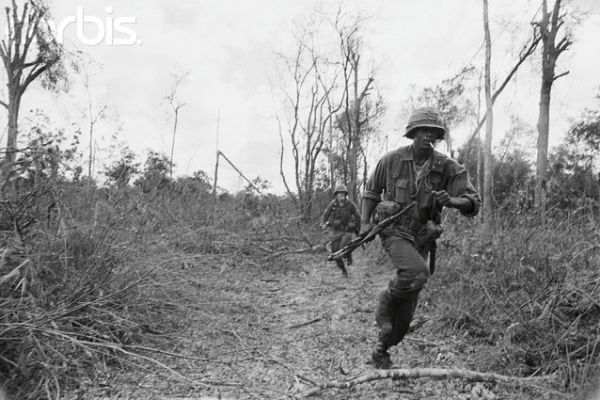AD 39: The Trung Sisters successfully revolted against Chinese rule, holding power until China reconquered the region four years later.
939: Ngo Quyen expelled the Chinese and founded the Ngo dynasty. A period of civil strife ensued after Ngo's death in 944.
1009-1225: Vietnamese art and culture thrived during the Ly dynasty.
1407-1428: China seized control of northern Vietnam, but resistance forces led by Le Loi drove the Chinese from the country. Le established the Le dynasty, which ruled the state, known as Dai Viet, for more than 300 years.
1471: Dai Viet conquered the southern kingdom of Champa.
1773: The Tay Son armies began to seize control of much of southern Dai Viet, which had been controlled by the Nguyen lords.
1802: Nguyen Anh defeated the Tay Son armies and united the northern and southern parts of the country, which he renamed Vietnam.
1861: French attacks on Vietnam prompted the emperor to cede a section of southern Vietnam, called Cochin China, to France.
1880s: France resumed its attacks on Vietnam. The entire region, along with Laos and Cambodia, came under French colonial rule.
1893: France incorporated all its territory in Southeast Asia into the Indochinese Union, or French Indochina.
1930: Ho Chi Minh established the Indochinese Communist Party to fight for independence from French colonial rule
1940: During World War II, Japan assumed effective control of French Indochina.
1941: Ho Chi Minh and other Communists established the Viet Minh nationalist organization to fight for Vietnamese independence.
1945: After World War II ended, the Viet Minh seized control of Vietnam in the August Revolution.
1946: French forces attempted to recapture Vietnam, initiating the First Indochina War.
1954: The Viet Minh defeated the French at the Battle of Dien Bien Phu. Vietnam was temporarily divided into two zones, with Ho Chi Minh as president of North Vietnam and Bao Dai as leader of South Vietnam.
1955: Bao Dai was replaced by Ngo Dinh Diem.
1959: Rebellion against the South Vietnamese government began, marking the beginning of the Vietnam War.
1960: The National Liberation Front (NLF) was established, backed by the North Vietnamese government.
1963: Diem was assassinated in a military coup d'état.
1965: United States forces landed at Da Nang and began fighting in Vietnam.
1968: NLF forces, along with the North Vietnamese army, launched the Tet Offensive.
1973: The United States ended its military involvement in the Vietnam War.
1975: South Vietnam surrendered to northern forces. Thousands of Vietnamese began fleeing the country.
1976: North and South Vietnam were officially unified under a Communist government as the Socialist Republic of Vietnam. Saigon, the former southern capital, was renamed Ho Chi Minh City.
1978-1979: Vietnam invaded Cambodia and removed the Khmer Rouge government. Vietnamese troops remained in Cambodia until the end of the 1980s.
1986: Vietnam launched the doi moi ("renovation") program, a series of economic reforms to encourage limited private enterprise and foreign investment.
1990s: The United States ended its long-standing trade embargo against Vietnam in 1994, and full diplomatic relations were established in 1995.



